Five Ways To Fake Speaking Dutch
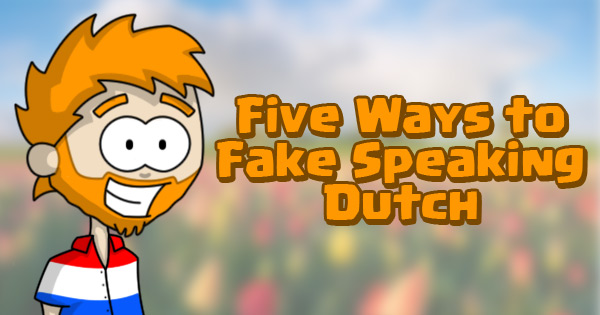
After many years of living in The Netherlands I have mastered the ability to fake speaking the Dutch language. It is something that came in handy when I first arrived in the country and is still useful to this very day (more so than it probably should be at this point). I probably should have used that time to actually master speaking the language instead but it is really hard. At least I can now pass on the techniques I have learned to a new generation of expats (who might be wondering what to do when someone suddenly starts speaking Dutch to them). These tricks are not limited to Dutch either. They are usable in any language.
Disclaimer: I cannot be held responsible for the trouble these techniques might get you into. I have ended up in many similar situations myself.
Five Ways To Fake Speaking Dutch
1) Nod and Smile:
This is the most basic technique. As the name implies all you have to do is nod and smile your way through the Dutch conversation. This gives the impression that you fully understand what the other person is saying and agree with them wholeheartedly. There is more than one drawback to this strategy however. At some point during the ‘conversation’ you are going to start looking fairly simple and easily swain (since you’ll have no idea what you are agreeing to). It’s also not advisable to use this technique in situations where smiling is not appropriate. You don’t want to be nodding and smiling happily and then discover the Dutch person in question is telling you the story about how their dog died tragically at the weekend. Luckily this is where the second technique can come in handy.
2) Emotional Mirroring:
This is a more advanced version of the nod and smile method. It requires you to copy the emotions of the other person in the conversation. If they look happy you look happy. When they look sad you look sad. If they look serious you look serious and make lots of serious ‘hmm’ sounds. This requires you to keep a close eye on the subtle emotional cues that might indicate a sudden change. You don’t want to be getting your emotions mixed up and giving the other person in the conversation the sexy eyes when they clearly are not.
3) The Extended Umm:
At some point in the conversation you will be expected to give a response. Do not panic. This is where the extended ‘ummmm’ comes in handy. Simply shrug your shoulders slightly and say, “uummmmm,” as if you are having trouble thinking of the answer to whatever question they have just asked you. With any luck they will sense that you don’t have an appropriate answer and will happily continue talking. However, this technique does not work with simple questions such as, “what is your name?” and, “would you like a cup of tea?”
4) The Extended Err:
You might think the extended Umm and the extended Err are the same but you would be wrong. The extended Err is a more advanced technique that can be used when you are actually able to speak a little bit of Dutch. It instantly gives away your non Dutchness but it lets you switch from Dutch back to English free of guilt.
The idea is that you start your reply with the basic Dutch that you know and then stop mid sentence with a long, “errrrrrrrrr.” It is important that you look as if you are struggling to think of a Dutch word while doing this (even if you have no intent of finishing the sentence in Dutch). Then once you have done it just long enough to make the other person feel uncomfortable you finish the sentence in English. This technique is perfect for forcing the conversation into your own language. The one drawback to this however is it is very difficult to make a Dutch person feel uncomfortable.
5) Get Drunk:
Getting a little tipsy can do wonders for your ability to speak Dutch. I’m not trying to say that all Dutch sound like drunks but having a little alcohol in your bloodstream can help take away some of the fears and self consciousness of speaking Dutch. Suddenly you will feel freer and looser and those complicated Dutch words will come out a little easier. So what if you mess up. Just don’t use this technique too often otherwise the Dutch will start to think you are an alcoholic. Certainly don’t use this technique at all if you are about to go into an important Dutch business meeting.
Bonus Tip – Be British:
The ‘Be British’ strategy is a technique that stretches back for centuries. It dates back to the days when the British Empire controlled most of the globe and it is still used today by British holiday makers everywhere. This technique does not actually involve faking that you know the local language at all. It is simply this… SPEAK… ENGLISH… VERY… LOUDLY… AND… VERY… SLOWLY. Sometimes this technique is accompanied by some rudimentary and slightly condescending miming. It’s a technique that assumes everyone should know how to speak the Queen’s English and that the inability to instantly understand it upon hearing it for the first time is simply a matter of IQ. It is not a technique that will make you very popular (but at least you won’t have to worry about actually speaking Dutch).



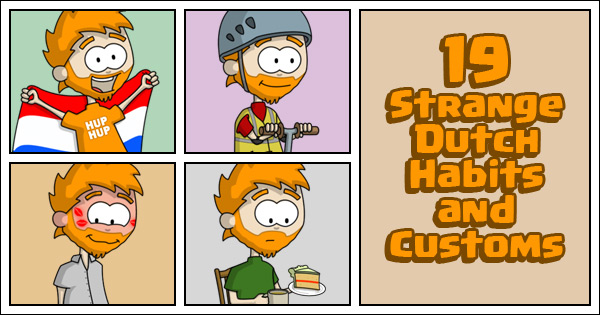

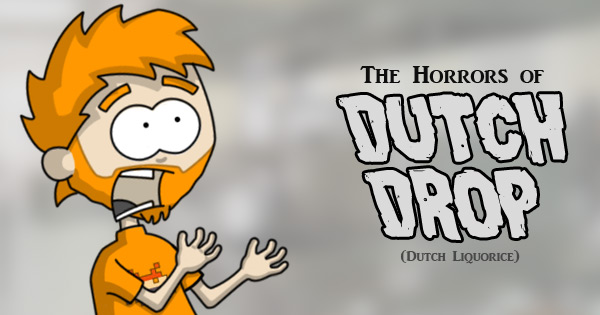



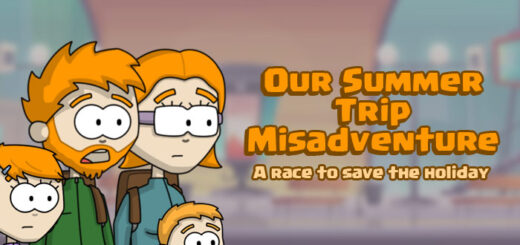
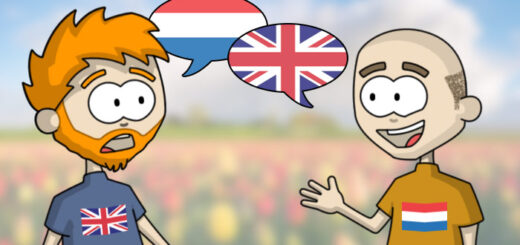

I use quite a few of those techniques in the mornings when I take my dog out. But it’s exhausting, especially first thing in the morning, so I’m giving up on Dutch and moving to another country. In a few months time, I’ll be practising these techniques on Italians. ;)
Oh wow. That is huge news. So you are going to be a Flamingo in Italy? Are you going to open up the restaurant over there too?
I will be a Flamingo in Italy (or Bologna, I haven’t decided on the blog title yet). But no restaurant. It didn’t even work here and there are already a million places like it in Italy. :) Fortunately, I already have a grounding in Italian, and probably speak/understand it better than I do Dutch after all these years! Plus, Italians don’t know English the way the Dutch do, so I’ll have to speak it more. At least I will finally have the benefit of a partner who speaks the language when it comes to residency/banking and all of those other boring, but difficult things.
That’s a shame. I thought it was going well. I can totally understand the benefit of having a partner who knows the local language. Who knows how much trouble I would have gotten myself into with out a Dutch wife :)
FYI, the comments didn’t let me actually reply to your reply, even though I clicked on the reply button.
I noticed that too. Another bug for the list of things for me to work out :) I can only reply because I’m doing it through my wordpress dash board.
Fixed it :) Thanks for helping me test it :p
I am from the USA. Once while in the Netherlands (near Enschede in Hengelo) I got mistaken for someone who was British. I don’t ride my bike much in the US, but I do like to when I’m over there. One particular ride to the store I lost my balance and started passing people on the left. One voiced his displeasure telling me I was not in Britain.
The question is did you correct them :)
It’s funny because it’s actually something I did last time I was in Amsterdam! I was there as a tourist, but it seems they keep thinking I should speak Dutch for some reason – at the end I was too lazy to correct them, so I nodded and smiled like a million times – really don’t know what i cheerfully agreed on, most of time LOL
Pray that you never find out :)
I used to have an Irish boss who’s accent was so thick that I’d have trouble understanding a single word. I think I used most of those techniques back then.
It’s funny to see how much trouble the Dutch have with Irish and Scottish accents too.
Yeh…..welcome back Stu
Thank you :)
I’m far too ingrained at the “staring-blankly” stage of Nederlands. Once I get a better working level, then I’ll apply these helpful tactics. :D
Ooowww. I should have included staring-blankly on the list. that’s how I started out too :)
May we display your header on our new site directory? As it is now, the site title (linked back to your home page) is listed, and we think displaying the header will attract more attention. In any event, we hope you will come by and see what is going on at SiteHoundSniffs.com.
Sure. I’d be happy for you to use my header for the link. Thanks.
Thank you so very much for giving permission. Aside from the All category and the slideshow on the Home page, you can see your header under Comics and the Netherlands.
Yep, I recognise all of these Stu. Well practiced and still employed now and then when I’m talking to someone with a strong accent. I’m okay these days with standard Dutch, but the southern accents really get me! No clue!
I’m discovering the same with the Northan Frisian accent at the moment.
On my first day in the Netherlands I had a very stressing time moving things home. And by the end of the day I went to McDonalds to have some food.
I practiced my whole-dictionary-of-dutch-so-far in my head and said “hi, I’d like a McChicken, please” in their language…
In my head:
-> ask for the hamburger
-> see the price on the screen
-> pay
-> say bye
-> end
The only problem is that I didn’t expect them to make more questions haha
And they did, and I didn’t understand a thing… I just smiled and said “nee nee” (it was a question, right).
It’s been two years now and I still don’t know what the question was. ;P
I’ve had many similar experiences :) I even had a Dutch girl come up to me in a night club and start chatting to me. I had no idea what she was saying and she left very disappointed. I still have no idea what she was trying to say to me.
When in a restaurant after you finally get the waiter’s attention, (after waving your arms around like a windmill in a force 9 gale) the waiter says “ik kom zo
bij u”, don’t nod in agreement because that actually means “I might be back in an hour or so!”.
Hahaha. So true :)